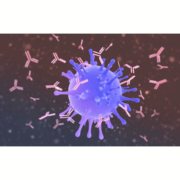Hospital Fatality Reporting: FACT CHECK
A false and dangerous rumor has recently been making the rounds that could put more people’s lives at risk, with some rumor mongers accusing hospitals of inflating the numbers, claiming that the hospitals have some kind of profit motive for treating COVID patients. Let’s talk about why this rumor is false and dangerous.
Can hospitals classify deaths as whatever they want?
NO. There are strict policies and procedures in place, not to mention incurring huge liability and the possibility of audits if done incorrectly. Determining the cause of death is much more complicated than just filling in whatever looks most likely. Medical examiners investigate, test, and when necessary, do autopsies. They report cause of death based on CDC guidelines. Death certificates are also accountable to federal jurisdiction, with each state’s public health division reporting back to the CDC. In addition, knowingly falsifying medical records is a felony crime with a potential fine of $250,000 or 5 years in jail.
Does it cost more to treat COVID-19 patients?
Yes, and most hospitals are losing money due to the COVID-19 pandemic. COVID-19 patients stay in the ICU, and the PPE, medications, and the equipment they use–including ventilators–is extremely expensive. In addition to the exorbitant cost of treating a COVID-19 patient, most hospitals have had to restrict routine care and elective procedures, so they are losing revenue. Read more about how Medicare pays hospitals here.
What’s the truth?
Deaths are most likely being under-reported, not inflated. Due to a lack of adequate testing and the people who die at home and aren’t counted, it is most likely that the official numbers have underestimated the amount of COVID-19 related deaths, in addition to the scope of the virus. Some states also give physicians the option of counting the cause of death for a COVID-19 positive patient as due to an underlying condition, rather than the virus if their symptoms weren’t respiratory. But as we are finding out, COVID-19 can present in many ways unrelated to breathing that have only recently started to be investigated. Read more about how and why the numbers are being updated here.
For additional reading about the true scope of COVID-19 deaths, click here.
Yours in Strength,
The Take Back Control Team







